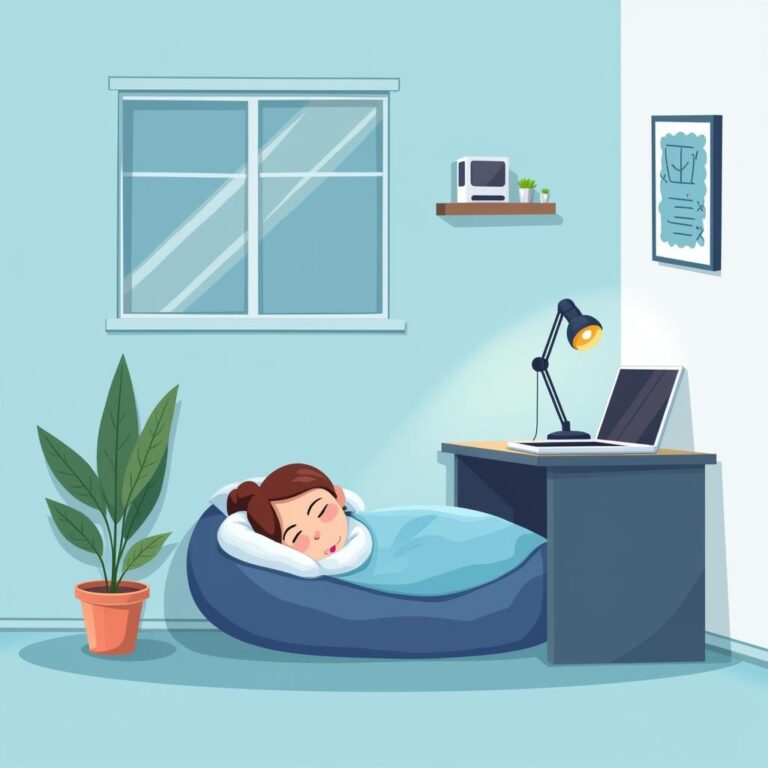In today’s fast-paced work environment, maintaining productivity can be challenging, especially during the afternoon slump. One effective way to combat fatigue is by incorporating power naps into your workday. Here, we will explore how to power nap effectively at work to boost your energy and enhance your overall performance.
The Importance of Power Naps
Power naps are short, restorative naps that can significantly improve your alertness and cognitive performance. Studies suggest that a brief nap, typically lasting between 10 and 30 minutes, can help improve mood, enhance memory, and increase focus. Instead of relying solely on caffeine, a power nap is a healthy and effective way to recharge your energy levels during the workday.
Choosing the Right Time for a Power Nap
Timing is essential when it comes to power napping. The best time to take a power nap is usually between 1 PM and 3 PM. This is when the body’s circadian rhythm naturally dips, leading to decreased alertness. Planning your nap during this time can have an optimal effect, allowing you to wake up feeling refreshed and ready to tackle the rest of your tasks.
Preparing for the Nap
To ensure that your power nap is effective, it’s essential to create the right environment. Here are some tips on preparing for your power nap:
- Find a Quiet Space: Look for a private area where you won’t be disturbed. This could be a break room, a designated nap zone, or your car.
- Use Sleep Aids: Consider using earplugs or a sleep mask to block out noise and light. This can help create a more conducive sleeping environment.
- Adjust the Temperature: Make sure the space is cool and comfortable. A slight drop in temperature can help signal your body that it’s time to rest.
Ideal Duration for a Power Nap
The duration of your power nap is crucial to its effectiveness. Research indicates that the ideal length for a power nap is between 10 to 20 minutes. This time frame allows you to enter the lighter stages of sleep without going into deeper sleep cycles, which can result in grogginess if interrupted. A brief nap can provide several benefits:
- 10-Minute Naps: Great for a quick boost in alertness and mood without entering deeper sleep stages.
- 20-Minute Naps: Allow you to enhance cognitive function and creativity without feeling sluggish after waking.
Techniques for Falling Asleep Quickly
Falling asleep quickly can be a challenge in a work environment. Here are some techniques to help you drift off faster:
- Deep Breathing Exercises: Take a few minutes to practice deep breathing. Inhale deeply through your nose, hold for a few seconds, and exhale slowly through your mouth.
- Progressive Muscle Relaxation: Tense each muscle group in your body for a few seconds and then release. This method can help reduce tension and promote relaxation.
- Visualization: Picture a serene scene or location that relaxes you. This mental imagery can help ease your mind and facilitate faster relaxation.
Waking Up from Your Nap
How you wake up from your power nap is just as important as how you prepare for it. Here are several tips to wake up effectively:
- Set an Alarm: Use a timer to ensure you don’t sleep longer than intended. Setting your alarm for 20 minutes is optimal.
- Get Up Gradually: When your alarm goes off, take a moment to sit up and stretch before getting out of your nap space. This gradual transition can help you feel less disoriented.
- Hydrate: Drinking a glass of water upon waking can help revive your body and mind.
Tips for Incorporating Power Naps into Your Work Routine
Integrating power naps into your workday doesn’t have to be complicated. Here are some practical tips:
- Schedule Your Naps: Treat your naps as important meetings. Block time on your calendar so colleagues know not to disturb you.
- Communicate with Your Team: Let your coworkers know about your power nap routine. Supportive colleagues can help create a culture that values rest.
- Experiment: Try different nap lengths and times to discover what works best for you. Pay attention to how you feel afterward to refine your approach.
Overcoming Common Napping Myths
Many people feel hesitant about taking naps due to common misconceptions. Here are a few myths debunked:
- Naps Make You Lazy: On the contrary, power naps can increase productivity by improving focus and combating fatigue.
- Napping is Only for Kids: Napping is a healthy practice for adults as well. Many successful professionals advocate for power naps.
- Longer Naps Are Better: While longer naps can be restorative, they may lead to sleep inertia, making you feel groggier. Short power naps are just as beneficial.
Conclusion
In summary, learning how to power nap effectively at work can enhance your productivity, focus, and overall well-being. By following the tips outlined in this article — from selecting the perfect time and duration to creating an ideal napping environment — you can make the most of your power naps. Embrace the potential of power napping and watch how it transforms your workday.







